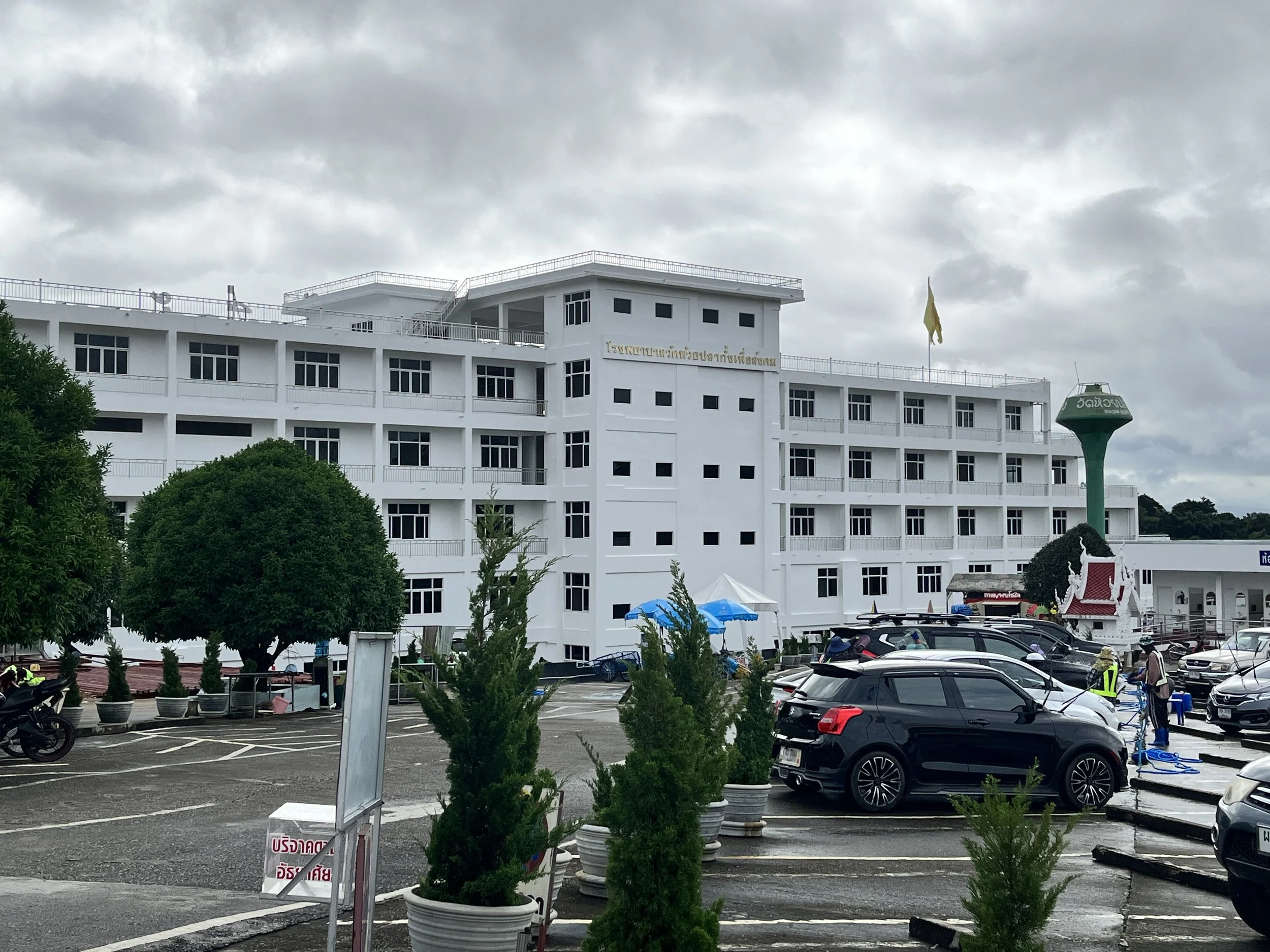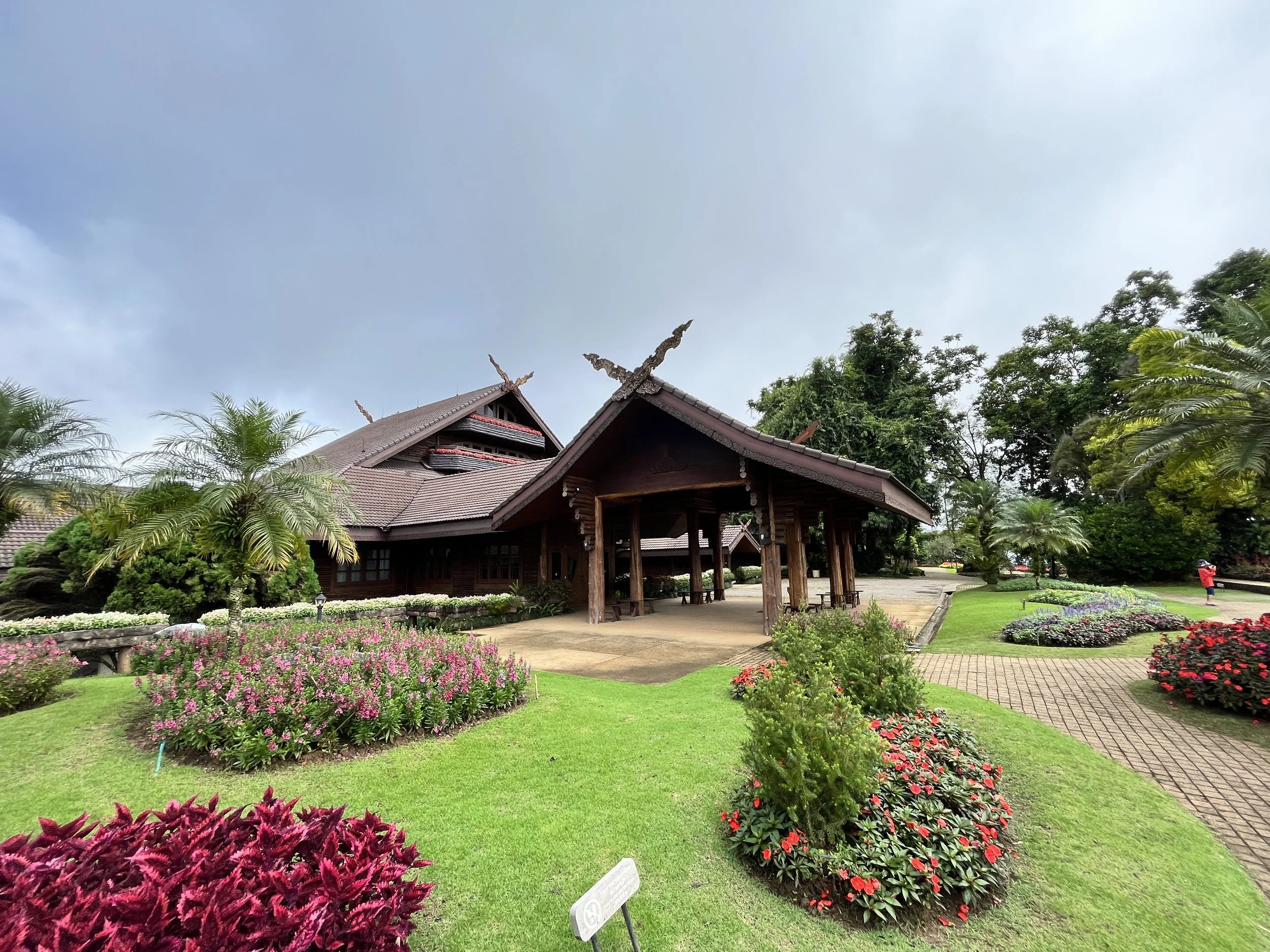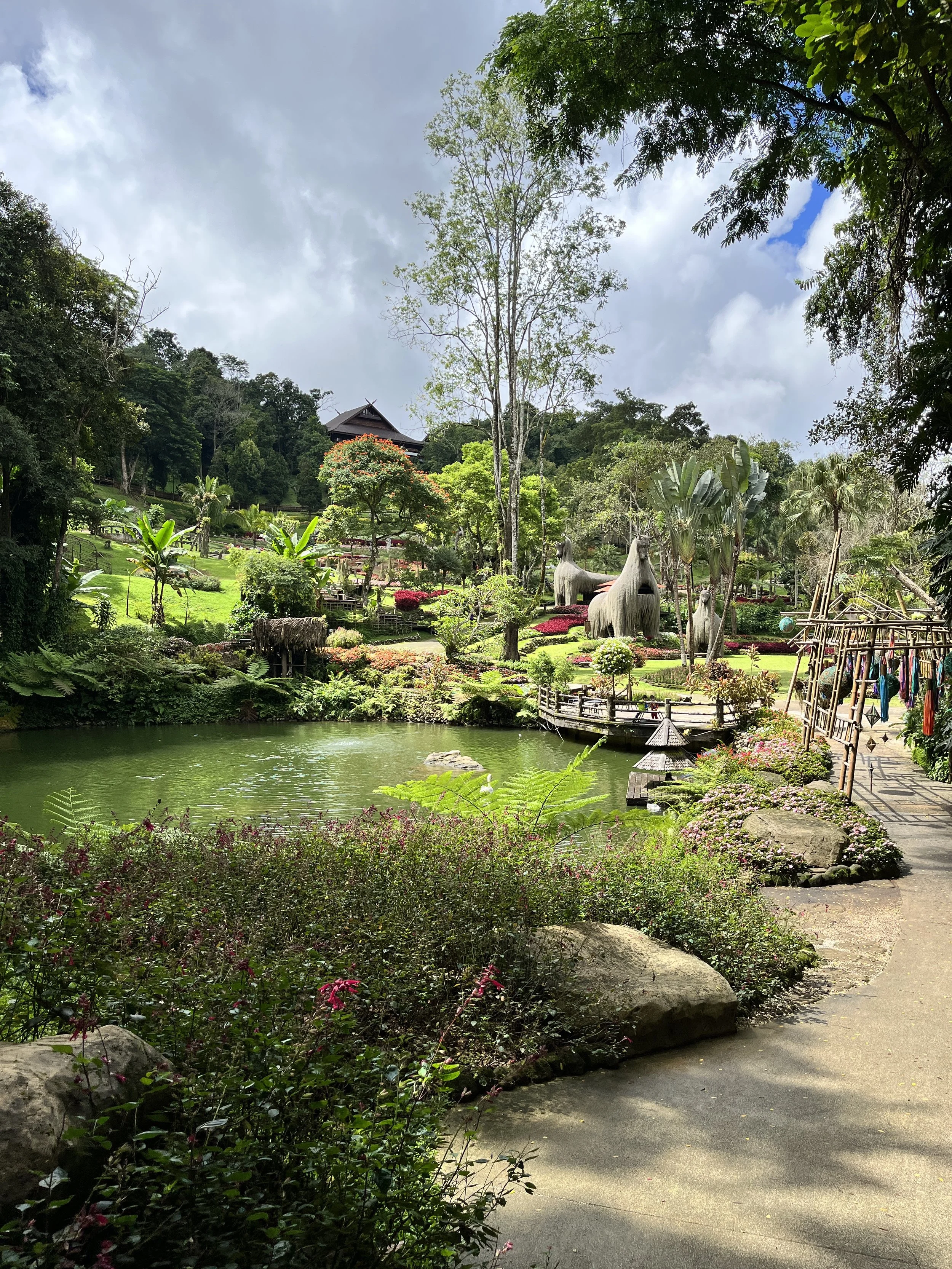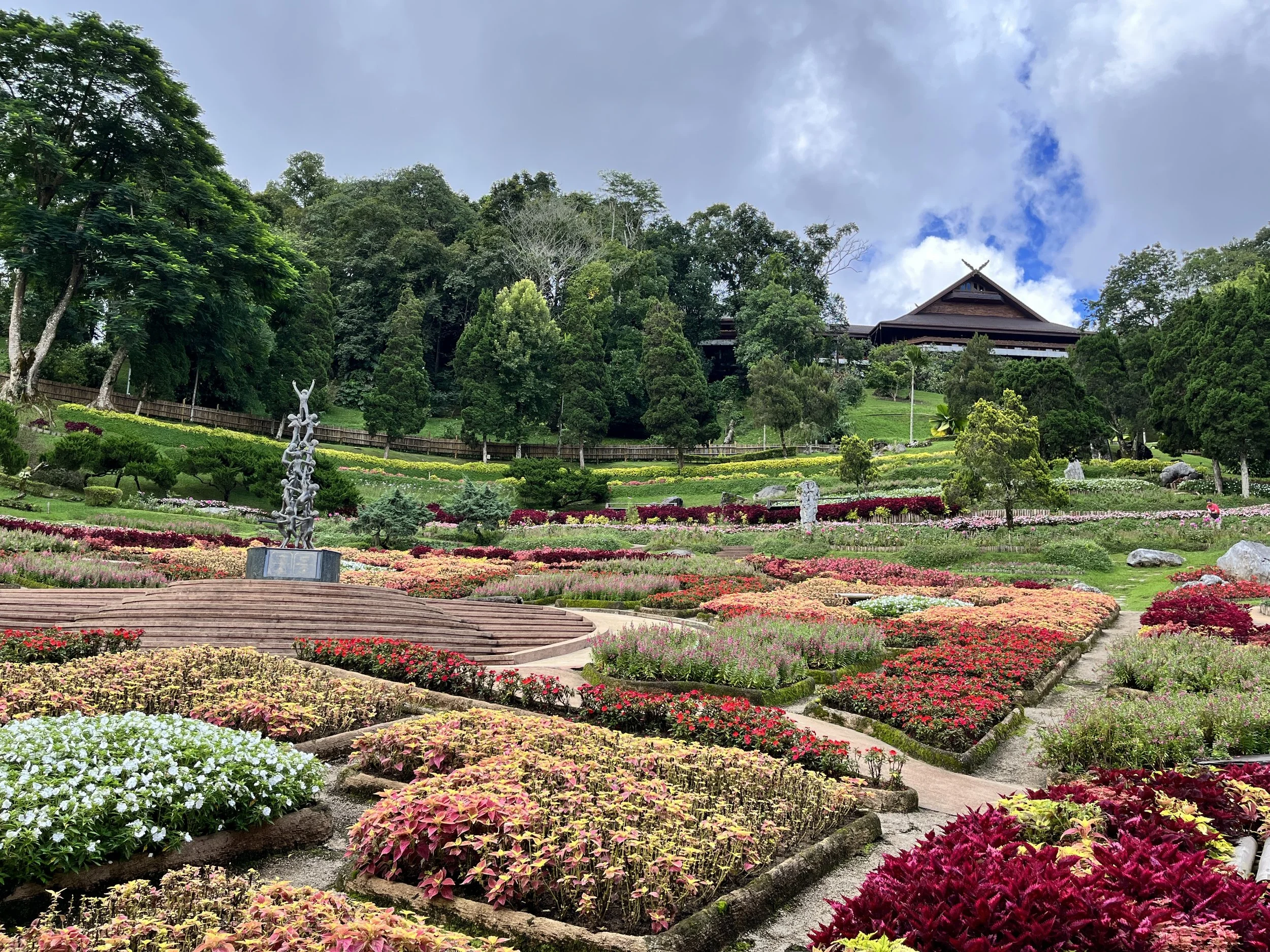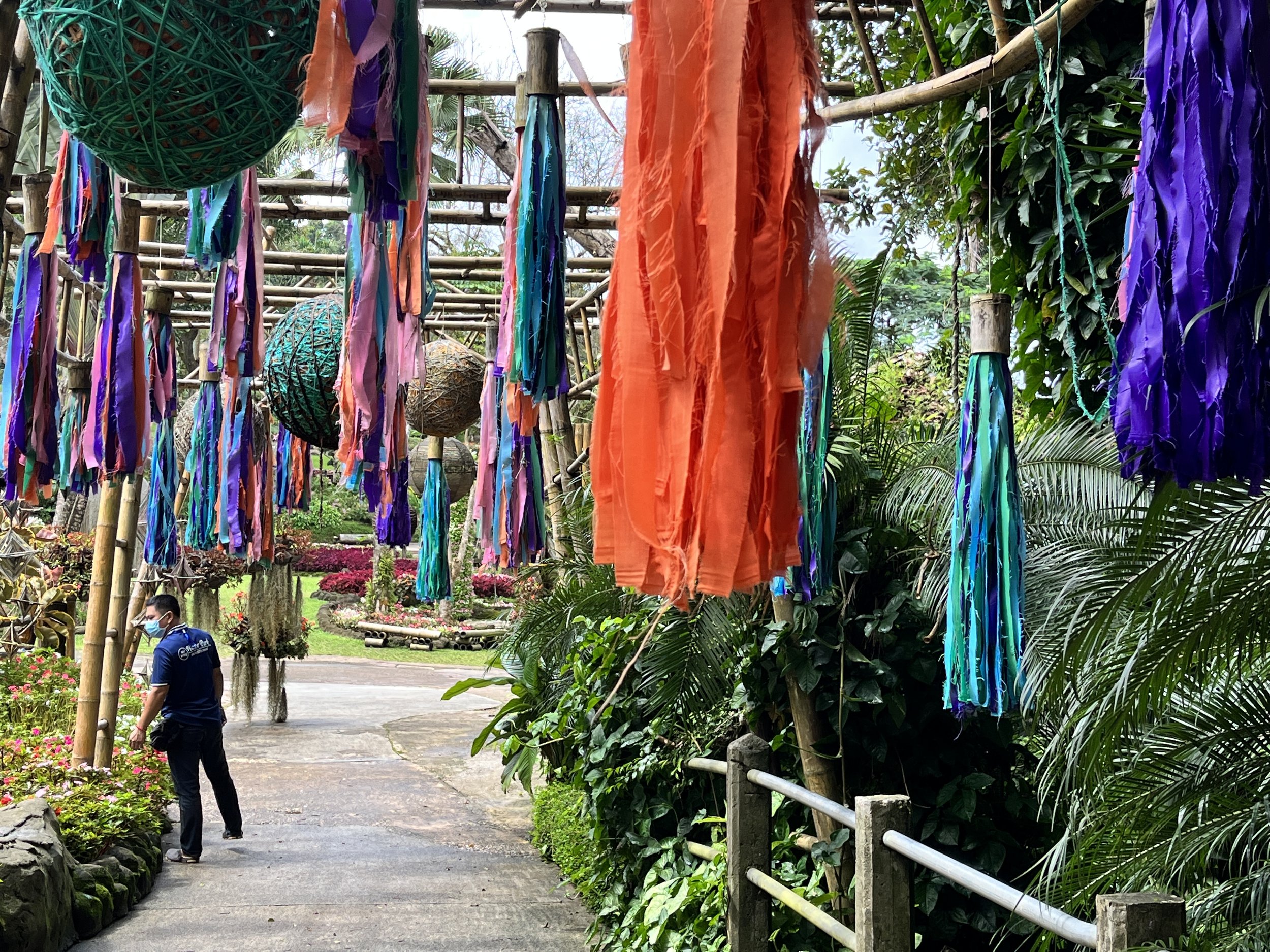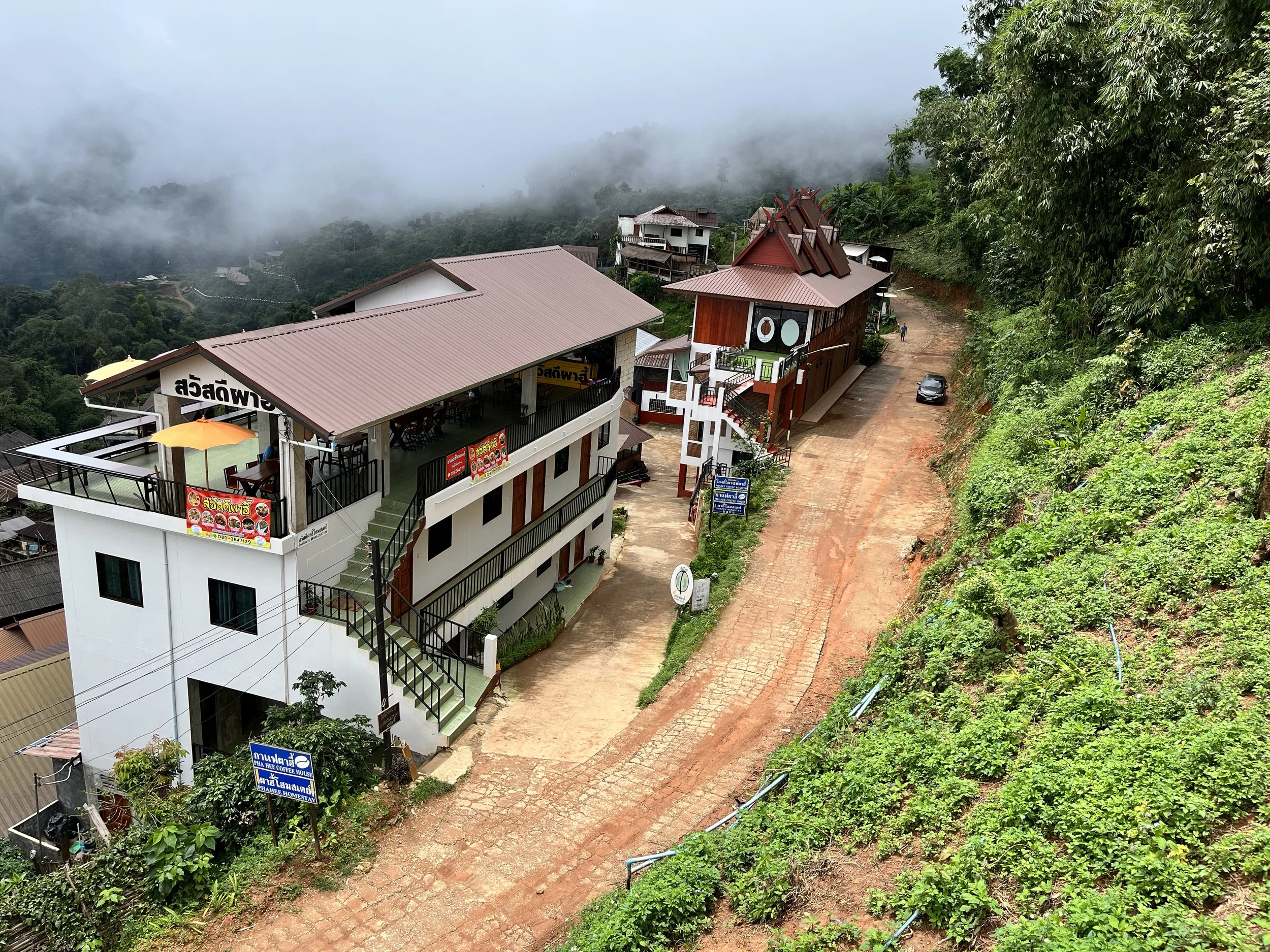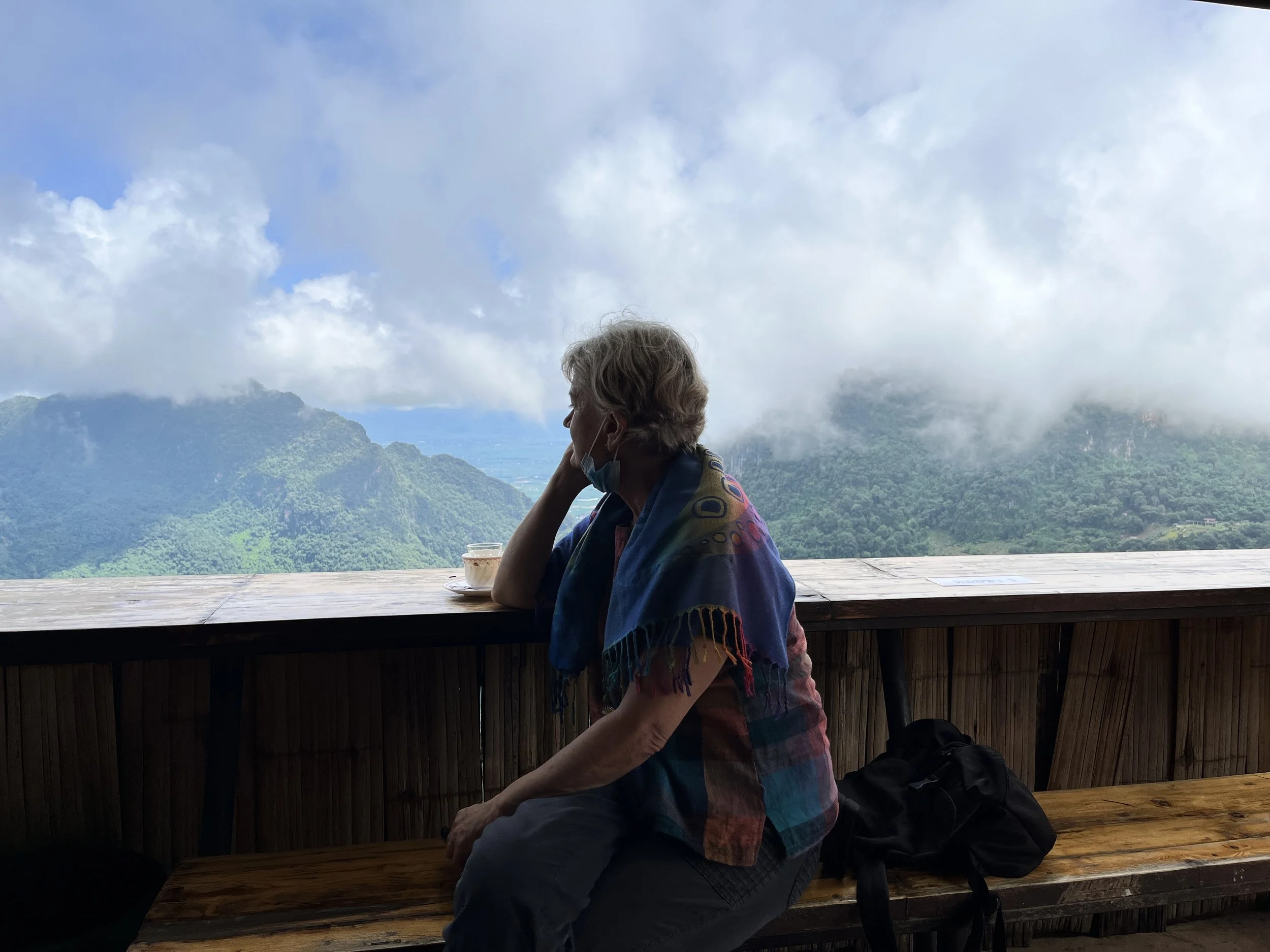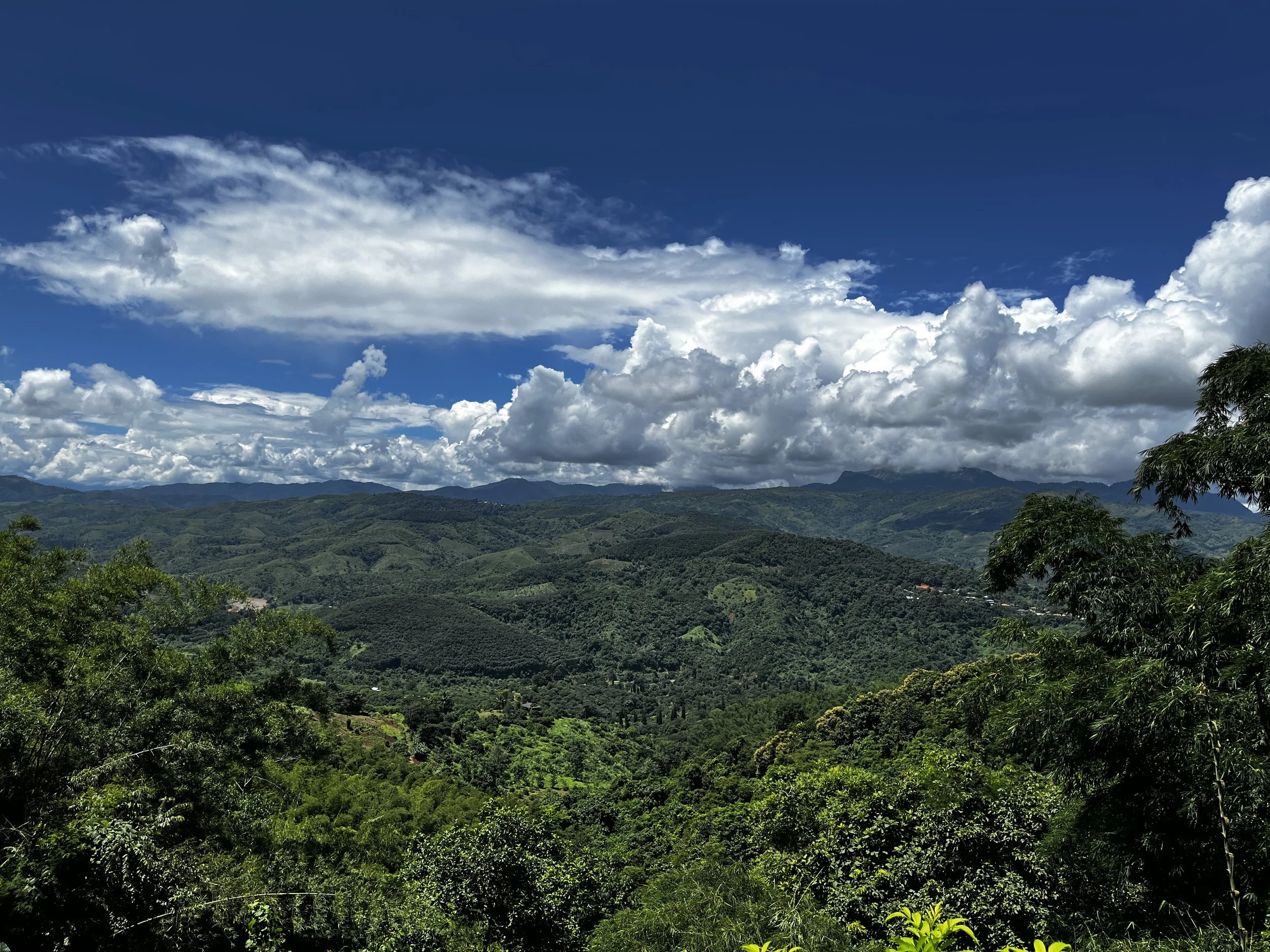Going Solo in Chiang Rai: Part 4
Day Trip to the Golden Triangle: An Unforgettable Experience
Today’s driver speaks near perfect English and it’s immediately obvious that he’s an excellent driver. He tells me about his two young kids as we leave a still sleepy Chiang Rai and head north along Highway 1 into the lush green landscape towards the Golden Triangle that will take us through Mae Chan and Mae Sai, along the border with Myanmar and then beside the Mekong with Laos on its opposite bank. Today’s eight-hour outing was AU$120 (US$86) whereas yesterday’s four-hour trip was half the price; both very fair considering the cost of fuel and the drivers’ dedication along to answering my many questions, like, ‘Goodness me, what’s that over there? That must be the largest Buddha statue I’ve ever seen!’
We take a short detour and are soon parked below the awe-inspiring white statue of the Buddha that sits next to an impressive conical-shaped community centre and an intricately carved and decorated white Wat – all overlooking a medical and aged-care centre that my driver explains is dedicated to caring for the homeless and destitute in their senior, and final, years.
Below: A sacred and humanitarian place along the way.
Our excursion soon has us up in the hills driving through coffee plantations to pay a visit to Doi Tung Royal Villa, now a tourist attraction featuring the expansive manicured Mae Fah Luang gardens. The villa is a clever combination of Nothern Thai and Swiss architecture built as a residence for the late Princess Srinagarindra, mother of the late King Bhumibol Adulyadej, on her return after many years living in Switzerland. It is said that she was a driving force in changing the fortunes of the poor and those afflicted by the opium trade through her efforts to have opium poppy fields replaced by lucrative coffee plantations. Those and the royal gardens provide employment for thousands, and, to my humble tastebuds, coffee produced by the hill tribes of this area is the among the best in the world.
Our next stop is Pha Hi Village. My driver explains that the once make-shift homes throughout this hill tribe village have been rebuilt or renovated with income from the coffee plantations. Many of the families offer B&B accommodation. We stop for a coffee parking on a bitumen quadrangle that moonlights as the village basketball court from late afternoon. The view from the elevated cafe’s terrace is spectacular. The same view is offered by the bed and breakfast home stays below. Even a brief coffee pitstop here feels like a mini spiritual ‘retreat’ from everyday city life.
Below: Coffee stop at Pha Hi Village, mountains covered in coffee plantations, the Myanmar border road and its sparse patrol, the most northern point of Thailand, a view up the Mekong and the Thai Immigration Office.
Our last stop is Sop Ruak on the Mekong where a giant golden Buddha financed by the Thai-Chinese foundation has us parking the car and exploring the boat-shaped site with its equally large concrete elephant. Sop Ruak’s now quiet streets are long and wide to accommodate the pre-Covid traffic across the Golden Triangle. Across the Mekong the Laotian bank, once an unspoiled lush green landscape, is now weighed down by a giant Chinese casino, accompanying hotels and apartment blocks.
A main point of interest in town is the Opium Museum. It displays hundreds of artifacts associated with the growing, processing, weighing, selling and smoking of the addictive drug along with the fascinating and often tragic history of its use, and stories of Western involvement in its distribution that give one pause to reflect on the damage done. These days the drugs come across the border from Myanmar, hence the border patrol along the unlit road. The drug trade, however, still manages its business across the road in the dead of night. My driver explains that there are many powerful people with the influence to have the patrols turn a blind eye. See you inside the Opium Museum in the next installment.





